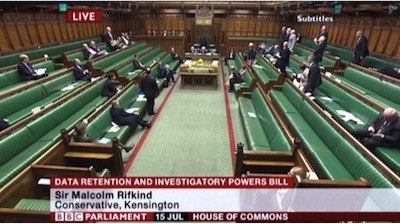 By Joshua Oh
By Joshua Oh
A politician’s dream is to be re-elected over and over with minimal effort, so where might one look to ensure this? The answer, perhaps, is gerrymandering. Gerrymandering was coined after Massachusetts Governor Elbridge Gerry enacted a law in 1812 to redraw legislative districts to benefit his party, which resulted in one of the redrawn districts resembling a salamander—thus the term “gerrymandering.” In fact, it has been gaining a notorious reputation for its widespread use based on its potentially unfair effects on election results. However, the Supreme Court will soon rule on a case, Gill v. Whitford, that will heavily influence future American elections.
Gerrymandering is without a doubt toxic to American democracy. It allows politicians to choose their voters by “packing”—concentrating one party’s supporters in one district to win overwhelmingly. On the other hand, “cracking” splits up supporters of the opposing party into multiple districts in order to dilute their impact, preventing opponents from securing a majority vote. This essentially means that elections are predetermined and one person’s vote is not necessarily equal to someone else’s vote, which could contravene the Equal Protection Clause of the Constitution.
The Supreme Court has always been reluctant to intervene in partisan areas meant for the political branches of government to debate. Thus, a standard or definition of political fairness in the gerrymandering context had never been set. Gill v. Whitford, an extreme example of partisan gerrymandering in Wisconsin, may soon change that. In 2012, Republican elected officials in Wisconsin were able to draw up a districting plan that permitted their party to win 61% of the Wisconsin Assembly, even though they only received 48.6% of the vote. In 2014, they won 64% of the Wisconsin Assembly, despite receiving only 52% of the vote.
The issue in the Whitford case was whether partisan redistricting could be so extreme as to be unconstitutional. The argument goes that Republican efforts to redistrict caused the dilution of Democratic votes, leading to a non-representative government. By packing and cracking districts, the votes of individual Democrats meant less than those of individual Republicans. The nation’s highest court will soon decide whether these arguments are persuasive.
In ruling on the constitutionality of a given redistricting effort, the Supreme Court could receive valuable assistance from recent technological advances that are equipped to detect gerrymandering. Indeed, algorithms are the latest threat to gerrymandering, as computers can now determine whether districts were drawn with political motivations in mind. Down the road, these algorithms could be used in a court of law in order to challenge unconstitutional gerrymandering. Since courts are demanding that districts be drawn more fairly, these algorithms could be the solution in providing the citizenry a fair and representative democracy that it deserves.
Professor Wendy Cho with the National Center for Supercomputing Applications at the University of Illinois is attempting to create such an algorithm to measure whether political parties manipulated a map to gain an unfair advantage, a term described as a “gerrymandering ruler.” This algorithm would identify the criteria—some even required by law—of redistricting: population equity, contiguity, compactness, and traditional districting principles. Based on these criteria, the algorithm would generate billions of maps that are, by definition, nonpartisan maps, since no political information was considered. These artificial, nonpartisan re-districted maps could then be compared to the districts that had been created by politicians. If the real map does not look like any of the billion possibilities generated by the algorithm, that would provide strong evidence of partisanship motivating the alleged gerrymandering. On the other hand, if the algorithm generated a set of one billion maps with partisan information considered, and the map in question looked similar to any of those billion possibilities, a court could then also infer partisan motivation.
This algorithm is but one possible solution to the toxicity that gerrymandering brings into the election system. It may be beneficial for the courts to be more receptive to technological advances like this one that can better detect and prove partisan bias in gerrymandering. Such extraordinary technology could encourage lawyers to introduce algorithmic evidence into a court of law, allowing the court to better assess cases before them in an objective manner as partisan gerrymandering continues to be a problem in American politics. It can also be a useful way to objectively give a voice to those who have felt that their votes did not matter when their district was always won by a particular party. It would no doubt advance the “one person, one vote” principle that the Constitution demands.
Picture Source
 By Robin Hammond
By Robin Hammond By Jason Liu
By Jason Liu By Jeff Bess
By Jeff Bess